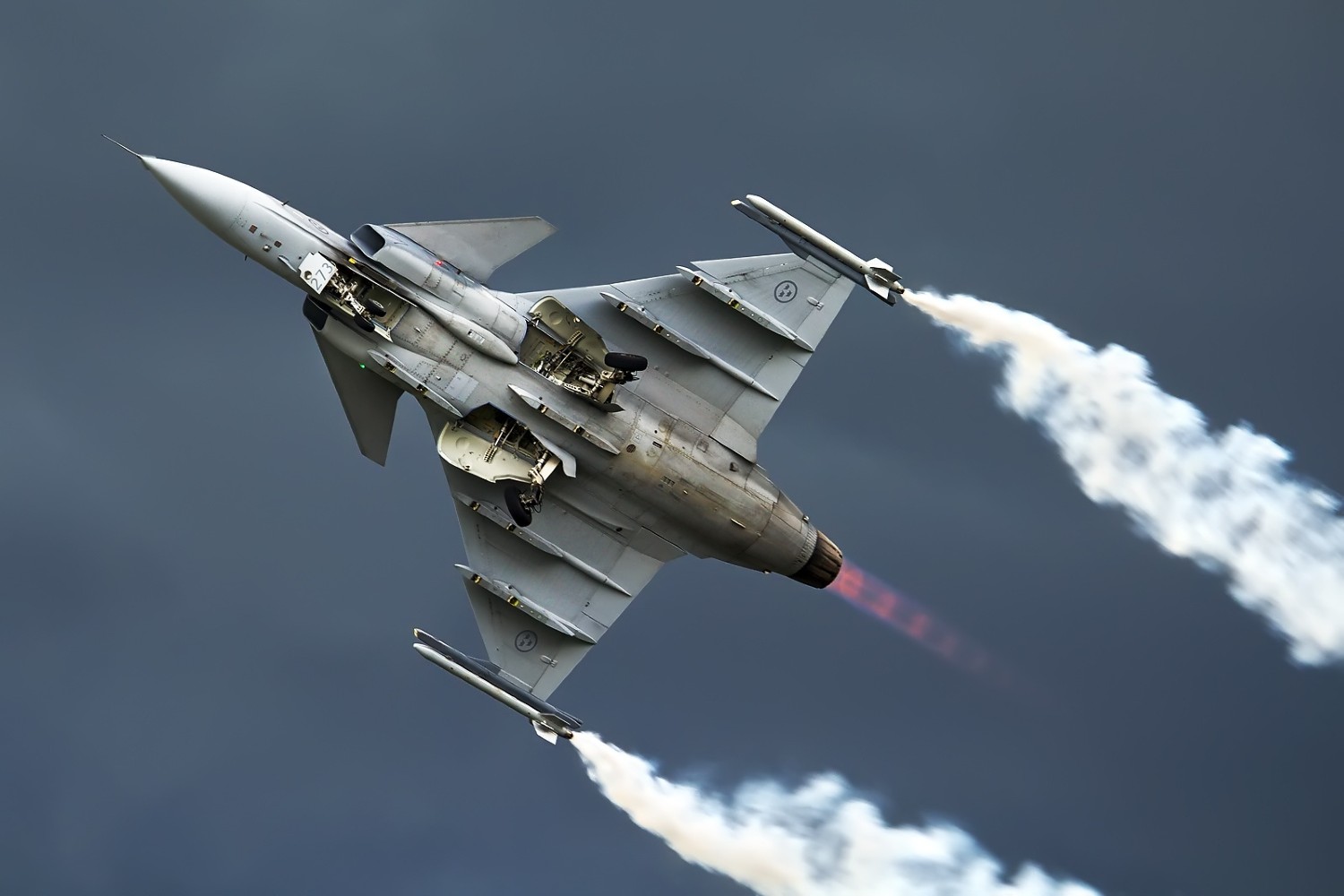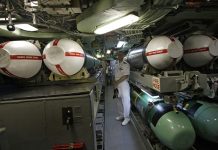As Thailand considers alternatives for its aging F-16 fighter jets, the United States is trying to entice the country with a new F-16 offer and attractive financing options.
‘Raptor Salad’ For Lunch! US F-22 Raptor Outgunned, Outmaneuvered By German Eurofighter Typhoon?
Last week, Robert Godec, the US ambassador to Thailand, met Thai Defense Minister Sutin Klungsang to discuss a military assistance project, including Lockheed Martin’s proposed supply of F-16 Block 70 fighter jets to the Royal Thai Air Force (RTAF). As reported by the local media, the meeting followed prior communication to the Thai Prime Minister, Srettha Thavisin.
While the correspondence details were withheld earlier, Defense Minister Klungsang announced on July 4 that the US ambassador presented the country with a loan proposal to enable the Air Force to purchase additional F-16 fighter jets. The offer, however, carries a hefty interest rate.
Sutin said Godec suggested that the RTAF purchase a fleet of F-16s at once rather than four or five aircraft. However, he discovered that the credit rate offered was “quite high.”
Thailand is seeking to replace its aging fleet of F-16 fighter jets. A dozen Fighting Falcons make up the fleet, and they are reaching the end of their operational life, with plans for decommissioning soon.
Sutin Klungsang noted that it was not conventional for the Southeast Asian country to buy aircraft on credit. He said, rather emphatically, that his country’s customary approach was to make payments from the national budget. He also stated that the possibility of a barter or discount trade was not discussed in the negotiations with the ambassador and that it would be challenging to implement barter in the purchase of fighter jets.
The United States ambassador also reportedly assured the Thai defense chief that the F-16s could be included in the Air Force’s data connection system and that Washington was prepared to provide the maintenance technology the Air Force needed.
“They said their jets are superior to other jets in terms of advancements and capacity and are the most suitable choice at present,” the defense minister told reporters.
Before the United States officially made this offer, Thai Prime Minister Srettha Thavisin said he had received a written proposal from the US ambassador. However, several issues needed to be resolved, including his demand for equal and reciprocal US investment in Thailand.
The US ambassador to Thailand purportedly offered assurances to sweeten a potential purchase for the Thai administration, especially since the Thai government had been presented with another offer: the Swedish Saab Gripens.
Earlier this year, the Royal Thai Air Force (RTAF) chief, Air Chief Marshal Phanpakdee Pattanakul, told the media that the Lockheed Martin F-16 Block 70, the most advanced variant of the combat-hardened jet, and the latest Saab JAS 39 Gripen E had both been shortlisted as finalists.
Later, reports suggested that a third aircraft had been put on offer for the RTAF: the South Korean FA-50 aircraft, which has seen significant export success recently. Korean Aerospace Industries (KAI) CEO Kang Goo-young reportedly pitched a proposal for the FA-50 to Thai Defense Minister Sutin Klungsang during his recent visit to South Korea.
Currently, the RTAF is contemplating choosing between the two previous options: the Lockheed F-16 Block 70 aircraft and the Swedish Gripen-E fighters. The RTAF currently operates the older variants of both these jets, making integration easier.
Once again, US manufacturer Lockheed Martin and Swedish manufacturer Saab are competing against each other. Earlier, the Lockheed F-35 emerged victorious over the SAAB Gripen-E in various European deals. It also thumped SAAB for a lucrative Canadian contract.
It is worth mentioning that Thailand was also initially interested in purchasing the F-35.
F-16 To Battle Gripens For Thai Contract
In 2008, Thailand ordered six Gripen C/Ds, which arrived in February 2011. As planned, Saab delivered a second batch in 2013 to complete equipping the 701 Squadron in Surat Thani.
Indian ‘Iron Dome’ Akash SAM Competes Against Chinese ‘Sky Dragon’ For Brazilian Missile Deal
The RTAF maintains several American-built aircraft, including F-16 and F-5 models, some of which have been in service since the late 1980s. Thailand aims to replace some of the older F-16 aircraft in its fleet as they get older.
While rejecting its request for the F-35, the US made an alternative proposal: it pitched the F-16 Block 70 to Thailand. The F-16 Block 70/72, also known as the F-16V, is the most advanced and highly sought-after version of this fighter aircraft.
The Block 70/72 is characterized by its state-of-the-art avionics, APG-83 AESA radar, updated cockpit, conformal fuel tanks, Automatic Ground Collision Avoidance System, center pedestal display with tactical imagery on a 68-inch screen with high resolution, and 12,000-hour structural service life.
“We’re confident the F-16 Block 70/72 will complement the RTAF’s existing F-16 fleet and deliver the advanced 21st-century security capabilities and performance needed to address Thailand’s most pressing defense requirements,” a Lockheed spokesperson had told Defense News.
However, the aircraft faces stiff competition from the latest Saab Gripen-E aircraft. After losing to Lockheed Martin in several contracts, Swedish manufacturer Saab has now offered its most advanced Gripen-E to help the RTAF replace its archaic and untenable F-16s.
In November last year, Robert Bjorklund, a Gripen sales executive in Saab’s Business Area Aeronautics, emphasized that Gripen E could enhance the RTAF’s present Gripen infrastructure and operational philosophy.

He also said that Gripen E’s tactical and critical systems were separated, making future upgrades an easy prospect. With competitors like the F-35 and Rafale controlling the market, Saab has been battling lost opportunities and a diminishing global footprint. The Southeast Asian market seems rewarding.
The Gripen-E has also received backing from the United Kingdom. Saab announced on March 20 that the UK government was supporting the proposal to sell the Gripen E to Thailand.
Swedish manufacturer’s offer included funding for military maintenance and training as well as radar system replacements for its Saab 340 early warning aircraft.
The basic list price of an F-16 is $63 million, compared to $85 million for the Gripen. Nonetheless, experts believe it will be a breakneck contest between the two fighters, considered the best in their generation globally. The latest US attempt at offering a loan may be one tactic to secure the deal from Thailand and defeat the Swedish aircraft once again.
- Contact the author at sakshi.tiwari9555 (at) gmail.com
- Follow EurAsian Times on Google News




